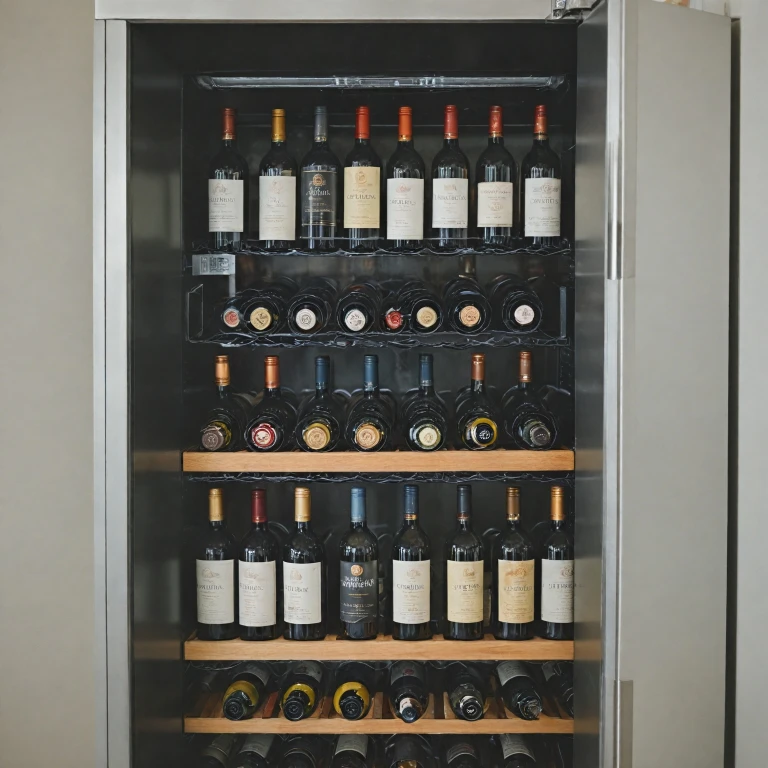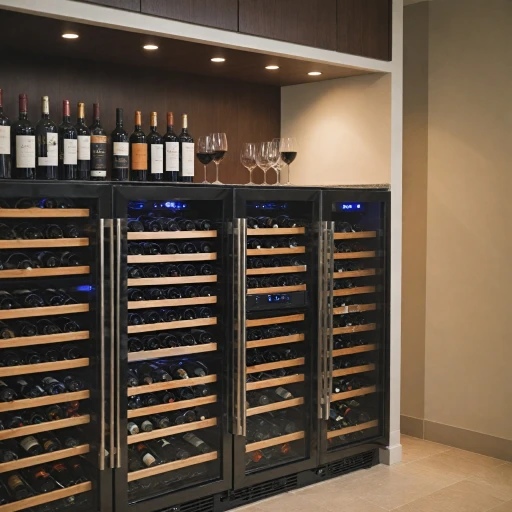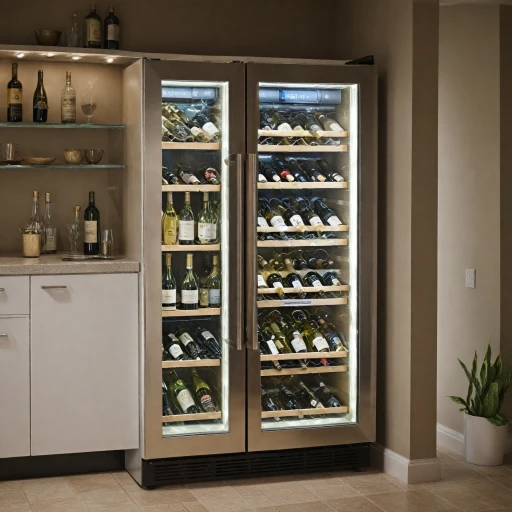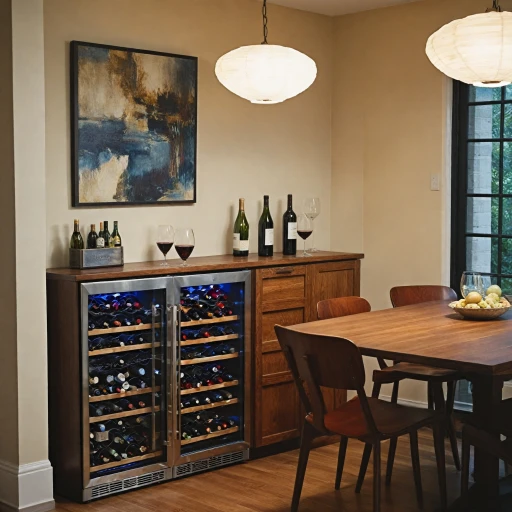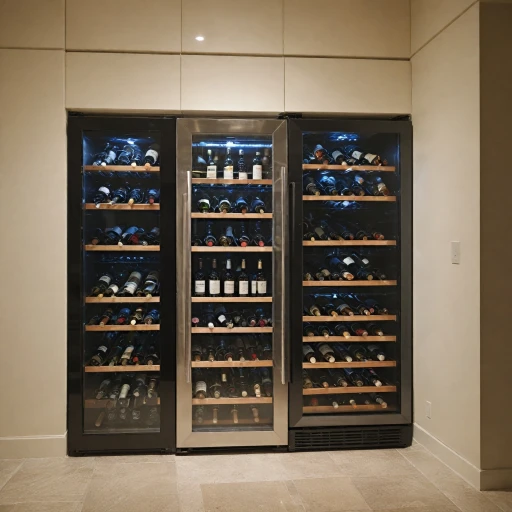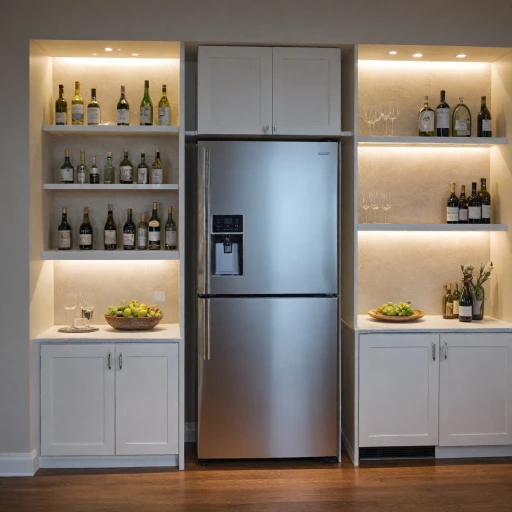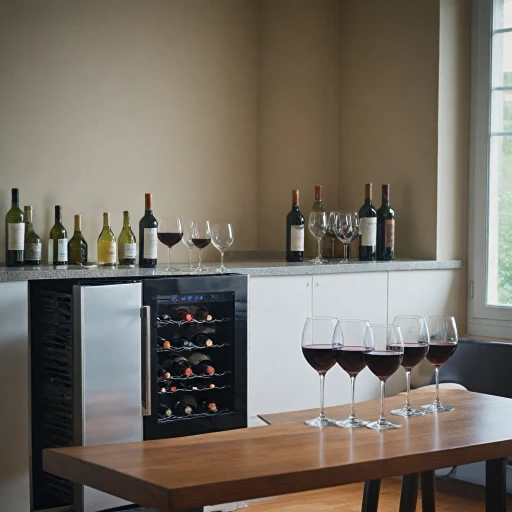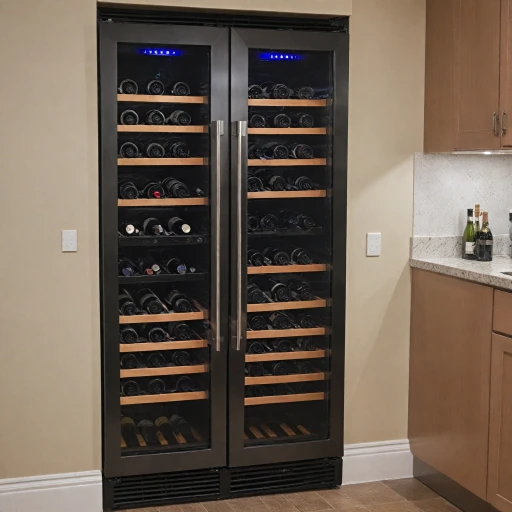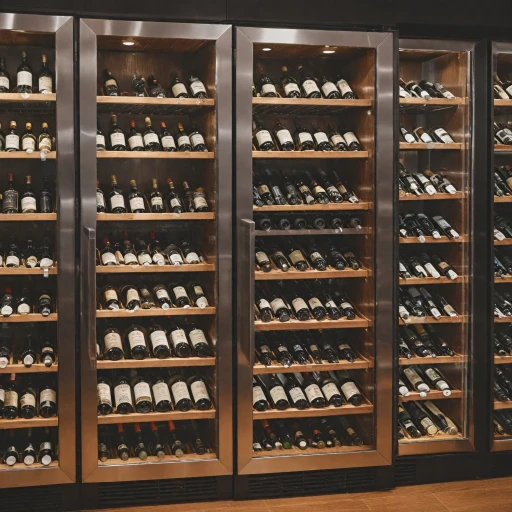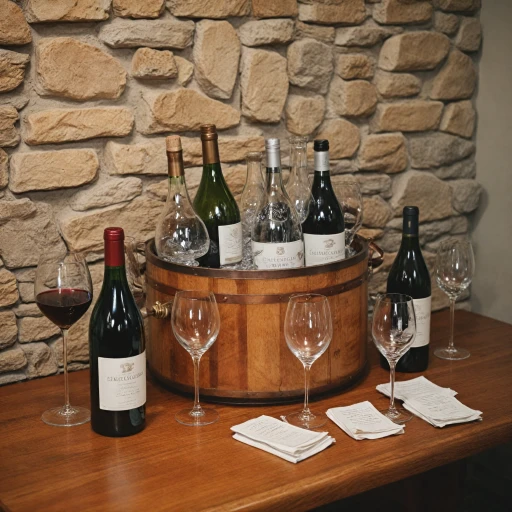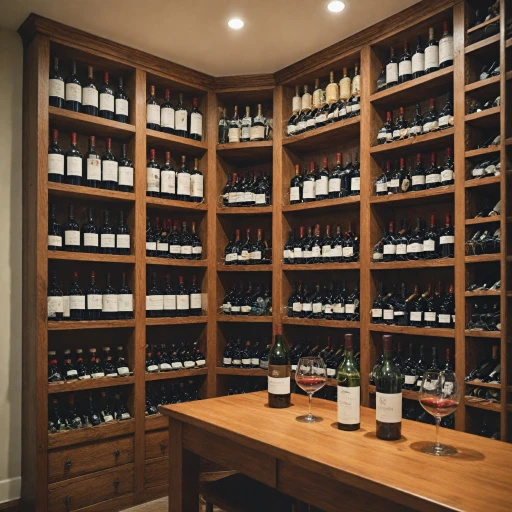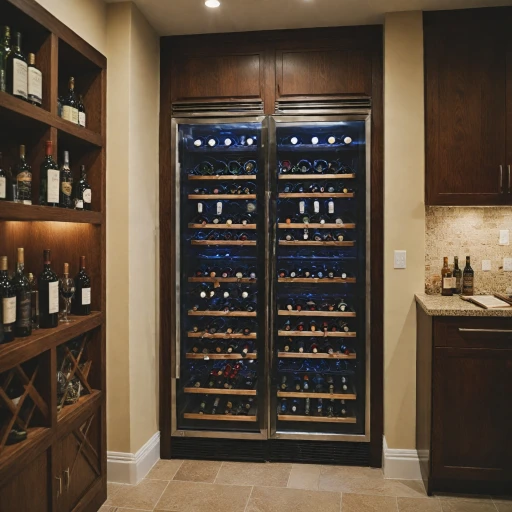
Understanding Wine Storage Basics
Basics of Wine Storage
Understanding the fundamentals of wine storage is crucial for any wine enthusiast. Whether you're storing red or white wines, the temperature at which they are kept plays a significant role in preserving their flavor and quality. A wine fridge, or wine refrigerator, is an essential tool for maintaining the optimal conditions for your bottles.
Wine storage is not just about keeping your bottles cool; it's about maintaining a consistent environment that protects the wine from external factors. This includes controlling the temperature, humidity, and light exposure. For those looking to store wine long term, a dedicated wine fridge can offer a more stable environment compared to a regular refrigerator.
When setting up your wine storage, consider the type of wine you are storing. Red wines and white wines have different temperature requirements, which will be discussed further in the article. A dual zone wine cooler can be a great investment if you plan to store both types, as it allows you to set different temperatures for each zone.
For more detailed information on the optimal temperature for storing white wine in a fridge, you can refer to this guide on white wine storage.
Red vs. White: Temperature Differences
Temperature Differences Between Red and White Wines
When it comes to storing wine, understanding the temperature differences between red and white wines is crucial. Each type of wine has its own ideal serving and storage conditions, which can significantly impact its taste and aroma. Red wines are typically best enjoyed at slightly warmer temperatures, while white wines benefit from cooler conditions.
Red wines, such as Cabernet Sauvignon or Merlot, are usually served at what is often referred to as room temperature. However, this doesn't mean the temperature of a modern heated room. Instead, it refers to a cooler room temperature, around 60-68°F (15-20°C). Storing red wines in a wine fridge set to this range can help maintain their rich flavors and aromas.
On the other hand, white wines, like Chardonnay or Sauvignon Blanc, are best served chilled. The optimal serving temperature for white wines is generally between 45-55°F (7-13°C). Keeping white wines in a cooler environment ensures their crispness and enhances their refreshing qualities.
Dual Zone Wine Fridges: A Solution for Varied Needs
For wine enthusiasts who enjoy both red and white wines, a dual zone wine fridge can be an excellent investment. These refrigerators allow you to set different temperatures in separate compartments, ensuring that both red and white wines are stored at their ideal conditions. This feature is particularly beneficial for those who wish to store a variety of wine bottles without compromising on quality.
By understanding the specific temperature needs of red and white wines, you can enhance your wine storage practices and ensure that each bottle is served at its best. For more insights on how to pair your wine bottles with the right glasses, check out The Art of Pairing Wine Bottles with Glasses.
The Ideal Temperature Range for Wine Fridges
The Science Behind Choosing the Right Temperature
For enthusiasts and connoisseurs alike, setting the optimal temperature in your wine fridge is crucial for preserving the delicate nuances of both red and white wines. In general, wine is best stored in a constant environment, where fluctuations are minimal. But understanding specific temperature requirements can elevate the enjoyment of each bottle.
White wines, like Sauvignon Blanc or Chardonnay, thrive in cooler settings. A fridge temperature between 45°F and 50°F (7°C - 10°C) is ideal for maintaining their crispness. These temperatures not only preserve the wine's bright acidity but also ensure that its complexity is not lost when served.
Red wines, on the other hand, are often best enjoyed at slightly warmer temperatures. A range between 55°F and 65°F (13°C - 18°C) is perfect for most red varieties, allowing their flavors and aromas to express themselves fully. For instance, a bold Cabernet Sauvignon or a delicate Pinot Noir will be at their best when not too chilled.
A dual zone wine cooler comes into play for those who prefer to have both red and white options. These refrigerators allow you to set different temperatures for each zone, making it easy to store and serve wines at their optimal conditions. Whether you are looking to store your wine long term or prepare it for immediate serving, investing in a wine cooler with adjustable temperature settings proves valuable.
Ensuring a harmonious balance in your wine's environment can preserve its quality and enhance its taste profile. For more insights and tips, especially if you're designing your storage solution, consider checking out crafting your perfect wine cabinet plans.
Common Mistakes in Wine Fridge Temperature Settings
Misjudging the Influence of Room Temperature
One common oversight in setting the optimal conditions for your wine fridge is not accounting for room temperature. The influence of the surrounding environment on your wine storage can be crucial. A sudden increase in room temperature can cause the fridge to work overtime, leading to fluctuations that can deteriorate the wine's quality.
Ignoring the Dual Zone Feature
The dual zone wine refrigerators are specifically designed to accommodate varied storage needs for both red and white wines. Yet, not utilizing these zones properly is a prevalent mistake. Often, users set the entire fridge at a uniform temperature, ignoring the fact that red wine and white wine each require different serving temperatures. Utilizing the dual zone feature allows each bottle to be stored at its best temperature, enhancing preservation and serving quality.
Confusing Serving Temperature with Storage Needs
Another frequent error is setting the wine fridge temperature to match the ideal serving temperature. While it’s important to have wine served at suitable temperatures, wine storage for long-term purposes requires a stable environment to maintain its integrity. It's crucial to appreciate the difference between a storage fridge temperature and a serving temperature to ensure every bottle is enjoyed at its finest.
Overloading the Fridge
Stacking bottles more than the recommended capacity can hamper the air circulation inside the wine fridge. This oversight can lead to uneven temperature distribution, which might compromise the consistency needed for ideal wine storage. It's advisable to follow manufacturer guidelines and avoid overstuffing your wine cooler to maintain its cooling efficiency.
Maintaining the correct fridge temperature and optimal storage conditions are pivotal aspects of wine preservation that enhance the longevity and full-flavored experience of your wines.
Technology and Features in Modern Wine Coolers
Modern Features Enhancing Wine Storage
In today's market, wine coolers have evolved significantly, offering a range of technological advancements that ensure your wine is stored at the optimal temperature. These features not only enhance the storage conditions but also make it easier to maintain the ideal environment for both red and white wines.
Dual Zone Wine Coolers
One of the standout features in modern wine refrigerators is the dual zone capability. This allows you to store red and white wines at their respective serving temperatures within the same unit. By having separate compartments, you can set one zone for red wines, which typically require a slightly warmer temperature, and another for white wines, which are best served chilled. This flexibility ensures that each bottle is stored in the best possible conditions, preserving its flavor and quality.
Advanced Temperature Control Systems
Temperature control is crucial in wine storage, and modern wine fridges come equipped with precise digital thermostats. These systems allow you to set and maintain the exact temperature needed for your wine collection. Consistent temperature is key to preventing spoilage and ensuring that your wines age gracefully over the long term.
Humidity Control
While temperature is a primary concern, humidity control is equally important in wine storage. Many advanced wine coolers now include humidity control features to prevent corks from drying out, which can lead to oxidation and spoilage. Maintaining the right humidity level helps preserve the integrity of the wine over time.
Energy Efficiency and Quiet Operation
Modern wine coolers are designed to be energy-efficient, reducing electricity consumption while maintaining optimal storage conditions. Additionally, advancements in technology have led to quieter operation, ensuring that your wine fridge doesn't disturb the tranquility of your home environment.
By understanding these technological features, you can make informed decisions when selecting a wine cooler that meets your storage needs. Whether you're storing a few bottles or an extensive collection, these innovations ensure that your wines are kept in the best possible conditions.
Tips for Maintaining Consistent Temperature
Maintaining Consistent Temperatures in Your Wine Fridge
Ensuring your wine fridge maintains a consistent temperature is crucial for preserving the quality of your wines. Here are some practical tips to help you achieve the best results:
- Regular Monitoring: Frequently check the temperature settings of your wine refrigerator. Use a reliable thermometer to verify that the internal temperature matches the set point. This is especially important for dual zone wine coolers, where red and white wines are stored at different temperatures.
- Avoid Frequent Door Opening: Every time you open the door of your wine fridge, the internal temperature fluctuates. Try to minimize the number of times you open the door to keep the temperature stable.
- Proper Placement: Place your wine cooler away from direct sunlight and heat sources like ovens or radiators. Excessive heat can cause the fridge temperature to rise, affecting the wine storage conditions.
- Regular Maintenance: Clean the condenser coils and ensure the seals on the door are intact. This helps the refrigerator maintain the desired temperature efficiently.
- Consider Room Temperature: The ambient room temperature can impact the performance of your wine fridge. Ensure the room is kept at a moderate temperature to aid the fridge in maintaining consistent temperatures.
- Use of Technology: Modern wine coolers often come with advanced features like digital temperature displays and alarms. Utilize these features to monitor and adjust the temperature as needed.
By following these tips, you can ensure that your wine fridge provides the optimal environment for both short-term and long-term wine storage. Whether you're storing red wines or white wines, maintaining a consistent temperature will enhance the quality and enjoyment of your wine collection.
